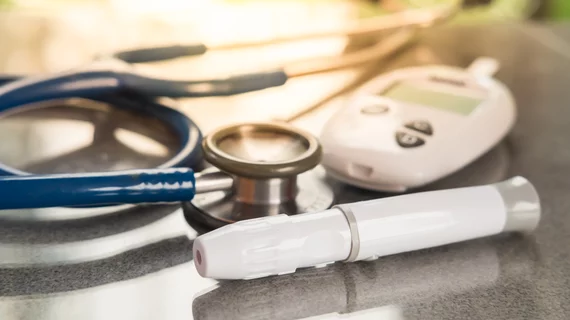The average annual cost of managing type 1 diabetes has skyrocketed, with the rising cost of insulin being a main contributor, according to a new issue brief from the Health Care Cost Institute (HCCI).
In 2016, the average annual cost of managing type 1 diabetes rose to nearly $18,500, a $6,000 increase since 2012, the report found. Almost half of that increase was attributable to the higher price of insulin. Spending on insulin was larger than any other category and increases were almost entirely driven by point-of-sale prices, according to HCCI. From 2012 to 2016, insulin spending per person with type 1 diabetes jumped from $2,900 to $5,700.
The brief comes after another recent study found that higher drug costs are heavily attributable to drugmakers hiking up prices, rather than new innovations. The rising drug costs across the nation have caught the attention of lawmakers, who announced an investigation into drug prices in January.
In the four-year period tracked by HCCI, every insulin product on the market increased, with a median price increase of 92 percent. While many drug prices are expected to go down over time, insulin has been used as a diabetes treatment since the 1920s, according to Diabetes UK.
“We are frequently told that high drug prices are justifiable in order to promote innovative new cures, but the cost of insulin––a longstanding therapy that 1.25 million Americans with type 1 diabetes rely on to live––has nearly doubled in the last five years, despite very little change in the underlying product,” Niall Brennan, CEO of HCCI, said in a statement.
In 2016, individuals with type 1 diabetes spent $5,705 per person on insulin, while non-insulin pharmacy services, including other prescription drugs and diabetic supplies, cost $4,119, HCCI found. From 2012 to 2016, insulin use only increased 3 percent among type 1 diabetics, while insulin spending roughly doubled. The point-of-sale price increased from $7.80 per day in 2012 to $15 per day in 2016 for someone using the average amount of insulin.
However, there have been more substantial changes in delivery mechanisms of insulin over the four-year period. Vials remained the most common delivery method, accounting for 53 percent of use in 2016. Pre-fill insulin pens rose from 38 percent of usage in 2012 to 46 percent in 2016. Cartridges represented less than 1 percent of insulin use annually. Still, prices increased for all insulin products from 2012 to 2016.
HCCI’s brief noted that manufacturer rebates and coupons could impact what individuals actually paid as a share of list prices over the study period.

